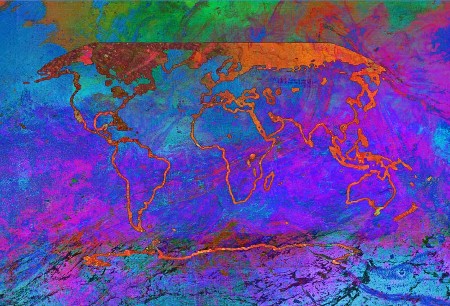Where are we today with the global atmospheric mean temperature rise? The answer is a scary 1.1 Celsius (2 Fahrenheit) degrees. Was that where previous IPCC climate reports estimated we would be in 2021? No. At the time the forecasts were at best a 0.5 and at worst 0.8 Celsius rise. But we have surged past those two thresholds and are accelerating towards 1.5 Celsius and at the present pace will exceed it in 2030.
What’s so important about the 1.5 number? Climate scientists have explained to the public that beyond 1.5 and approaching a 2.0 Celsius rise will cause a chain of events that have become known as tipping points. This term, popularized by Malcolm Gladwell, in his book “How Little Things Can Make a Big Difference,” illustrated the concept using marketing examples. But today, tipping points have become part of climate change vernacular and refers to a small change, a threshold passed, or a moment in time that upsets the balance of a system leading to much larger changes.
Gladwell is no climate scientist. In fact, he isn’t a scientist of any description, but climatologists have embraced his terminology in their latest Intergovernmental Panel on Climate Change (IPCC) report. This sixth edition that describes the current and future state of the world’s climate presents the physical findings of climate change gathered from around the world, describes the certainty of human influence, and projects possible climate futures.
In its Summary for Policymakers it states:
“It is unequivocal that human influence has warmed the atmosphere, ocean and land. Widespread and rapid changes in the atmosphere, ocean, cryosphere and biosphere have occurred.”
The report documents the rise of carbon dioxide (CO2), methane (CH4), and nitrous oxide (N2O in the atmosphere and ocean with a particular focus on the last six decades. It states that the last four decades have each been successively warmer than the previous ones, noting that larger increases are happening over land and lesser ones over the ocean. In fact, atmospheric temperatures over land surfaces are well above the mean 1.1 Celsius rise, hitting 1.59 Celsius (2.86 Fahrenheit) while the atmosphere over oceans has risen 0.88 Celsius (1.58 Fahrenheit). The drivers for this rise are largely human-caused. The report weighs human against natural causes at 97.27% attributable to the former rather than the latter.
There are other notable physical changes we humans have influenced:
- global mean precipitation on land is increasing.
- mid-latitude storms (hurricanes, cyclones and typhoons) are shifting poleward.
- the Jet Streams of both the northern and southern hemispheres are shifting and becoming more unstable.
- mountain and continental glaciers and ice sheets are in retreat as is sea ice coverage.
- the upper ocean layers have seen a rise in temperature because of increased CO2 absorption and warmer temperatures above surface waters.
- the ocean is becoming more acidic because of the increase in absorbed CO2.
- global mean sea levels have risen 0.2 metres (7.8 inches) since the beginning of the 20th century and the rate of increase has almost doubled in the first two decades of the 21st century.
- on land, climate zones have been shifting poleward in both hemispheres with growing seasons seeing an average lengthening of two days per decade since the 1950s.
- extreme heatwaves, increasing wildfires, prolonged droughts, and heavy precipitation events leading to flooding are all on the rise.
The scale of these changes, when matched against paleoclimate records, is unprecedented. Atmospheric CO2 is higher than at any time in the past 800,000 years. The changes being observed are greater than paleoclimate records of the last warming period of significance, 125,000 years ago. Glacier and sea ice retreats are unprecedented for at least the last 2,000 years. Sea-level rise is at a faster pace than in any preceding century over the past 3,000 years with ocean warming faster than at any time since the end of the last Ice Age, 11,000 years ago. And surface water ocean acidification hasn’t been matched in the last 2 million years.
Where are the tipping points? The most notable include sea-level, atmospheric temperature rise, and compounding events of extreme heat, drought and wildfire on continental landmasses becoming far more frequent.
That takes us to page 12 of this 42-page IPCC Summary for Policymakers document. Tomorrow, we will continue and look at what the document says about the extent of the human reach of climate change across the globe and what are our possible climate futures.










[…] The Medical News from the JAMA (The Journal of the American Medical Association) Network cites findings from the IPCC (UN Intergovernmental Panel on Climate Change) sixth assessment report which I have previously summarized in three postings on this site. You can link to the first of three here. […]